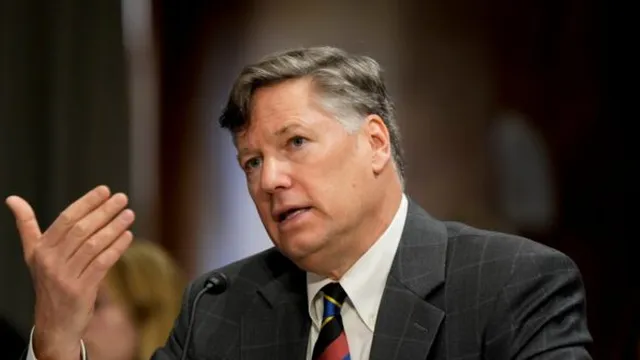
U.S. revokes visas of Mexican band for glorifying drug cartel leader
2025-04-03 07:03- Los Alegres del Barranco projected an image of cartel leader El Mencho during a concert in Jalisco.
- This led to visa revocations by the U.S. State Department and investigations by Mexican authorities.
- The incident highlights the ongoing cultural debate about narcocorridos and their effects on society.
Express your sentiment!
Insights
In early April 2025, Los Alegres del Barranco, a Mexican band performing narcocorridos, sparked controversy during a concert in Zapopan, Jalisco, when they projected the face of drug cartel leader Nemesio Oseguera Ramos, known as 'El Mencho', onto a large screen. This incident led to public outrage, prompting the U.S. State Department to revoke the work and tourism visas of the band members citing national security concerns. The revocation of their visas is part of broader efforts by U.S. authorities to address the influence of criminal organizations, especially since the Jalisco New Generation Cartel has been named a foreign terrorist organization. In light of the event, Mexican prosecutors launched investigations to determine whether the band's actions amounted to glorifying a criminal and violent lifestyle. This controversy reflects a larger cultural debate in Mexico regarding narcocorridos, a genre of music that narrates stories about drug traffickers and has both supporters and detractors who see it as either a reflection of societal realities or a glorification of violence. Several Mexican states have responded by imposing bans on public performances of this genre, intensifying the ongoing discussions on how Mexican society should confront the portrayal of drugs and violence in music, and what the implications are for artists involved in such expressions.
Contexts
Narcocorridos, a subgenre of Mexican folk music that narrates the lives and exploits of drug traffickers, have emerged as a significant cultural phenomenon, especially among the youth in various communities. These songs often glorify the lifestyle associated with drug dealing, including themes of violence, wealth, and rebellion against authority. As such, they create a complex narrative that appeals to the younger generation, often resonating with their experiences, aspirations, and societal challenges. The lyrics portray not just the lifestyles of drug lords but also reflect social issues, giving voice to feelings of disenfranchisement, desperation, and the allure of quick financial success possible through illicit means. Consequently, narcocorridos have become a means of expression and identity for many young people, allowing them to identify with a narrative that seems to validate their struggles and aspirations within socio-economically challenged environments. The impact of narcocorridos on youth culture is multifaceted. On one hand, these songs can reinforce negative stereotypes and glamorize criminal behavior, potentially influencing young listeners to view drug trafficking as an appealing and viable option. Research has indicated that regular exposure to narcocorridos may normalize the values associated with drug culture, making the lifestyle seem less deviant and more acceptable. On the other hand, some critics argue that the popularity of narcocorridos is a reaction to systemic issues such as poverty, lack of opportunities, and violence in communities. By addressing these themes, the music serves as a mirror reflecting the realities faced by many youths, potentially sparking critical conversations about the underlying causes of such societal conditions. Moreover, the reach of narcocorridos is not limited to Mexico but extends to various parts of the United States and other countries with large Hispanic populations, thereby influencing diverse cultural landscapes. The availability of narcocorridos on digital platforms and social media further amplifies their reach and impact. It allows for a wider audience to engage with the music, creating a shared cultural experience that can lead to both a romanticization of drug culture and increased awareness of the socio-economic contexts that give rise to such narratives. This duality poses a challenge for parents, educators, and community leaders, who must navigate the delicate balance between understanding the cultural significance of the music and addressing its potentially harmful implications. In conclusion, the impact of narcocorridos on youth culture is a complex interplay of celebration and caution; while these songs can foster a sense of community and identity for young people in marginalized communities, they simultaneously risk promoting a dangerous glamorization of drug-related lifestyles. Understanding this cultural phenomenon requires a nuanced approach that considers both the artistic expression found in narcocorridos and the real-life implications of their messages. As society grapples with the challenges that come from socio-economic disparities and the allure of narcocorridos, it is crucial for communities to engage in honest dialogues about the meanings embedded in these songs and to seek pathways that empower youth towards more constructive and positive cultural expressions.